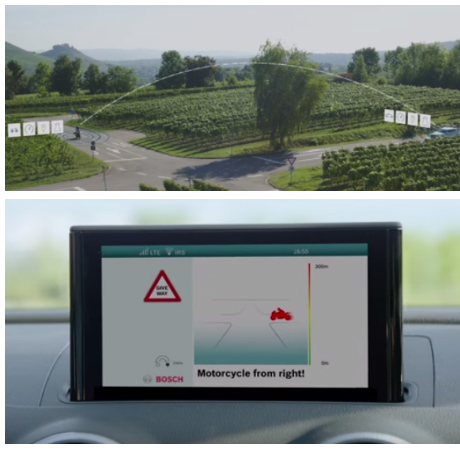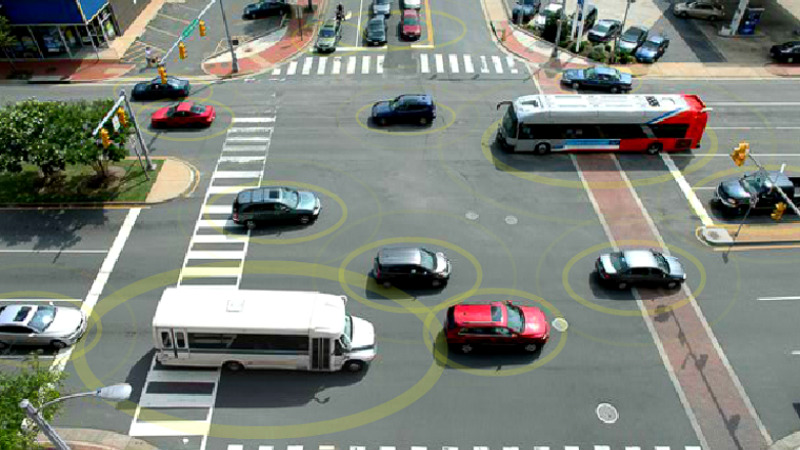Can mobile tech prevent collisions between vehicles and pedestrians? South Australia thinks so. Its capital city of Adelaide has launched a test rollout of an early collision warning system powered by mobile apps for drivers and pedestrians.
You’ve probably heard of P2P (peer-to-peer) and M2M (machine-to-machine) technologies. Enter V2V (vehicle-to-vehicle) and V2P (vehicle-to-pedestrian) technology–each of which leverage 4G mobile networks and apps to warn drivers, cyclists, or even pedestrians of oncoming hazards.
How collision warning apps work
 So far, V2V has been shown to prevent collisions between cars and motorcycles. (See adjacent photos and the video below this story.) With V2P, the same tech can be used as a collision warning system for pedestrians and cyclists, too, by alerting both drivers and pedestrians or cyclists via a mobile app.
So far, V2V has been shown to prevent collisions between cars and motorcycles. (See adjacent photos and the video below this story.) With V2P, the same tech can be used as a collision warning system for pedestrians and cyclists, too, by alerting both drivers and pedestrians or cyclists via a mobile app.
Before a driver turns a blind corner for example, the system will warn the driver of any pedestrian or cyclist crossing the street. Testing of the system involved all common scenarios: cars and cyclists approaching corners and crossings, cars reversing out of driveways, and so on.
The collision warning system relies on GPS and communicates at a rate of up to 10 times per second. It can be transmitted to any device within a several hundred-meter radius. In the future that might include any of the 16 million smartphone users in Australia and if expanded, it could feasibly be used by any of the two billion smartphone users on the planet.
A team effort by diverse players
The collision warning trial in Adelaide has been a team effort by the South Australian Government, Australian tech firm Cohda Wireless, the UK’s RDM Group, and Australian mobile carrier Telstra among others. The trial was funded in part by the government’s AU$10 million Future Mobility Lab Fund aimed at boosting local testing, research and development of connected and autonomous vehicle technologies.
Cohda currently commands about 60 per cent of the V2V communication market worldwide. Cohda CEO Paul Gray says the Adelaide trials highlight the impact of Vehicle-to-everything communications on community safety. “Giving vehicles 360-degree situational awareness and sharing real-time driving information is the only way we can create safer roads,” he says.
Telstra Chief Technology Officer Håkan Eriksson says the technology would make Australian roads safer, more efficient, and better-prepared for the future of autonomous vehicles. “The most important outcome of [this] technology is the increased safety for road users,” he says. “It’s an important step on the journey to fully-autonomous vehicles on Australian roads.”
South Australia already has a solid track record with autonomous car research, and in 2015 held the first driverless car trials in the Southern Hemisphere.
For more about the tech used in the trial, check out Cohda Wireless and RDM Group online.





